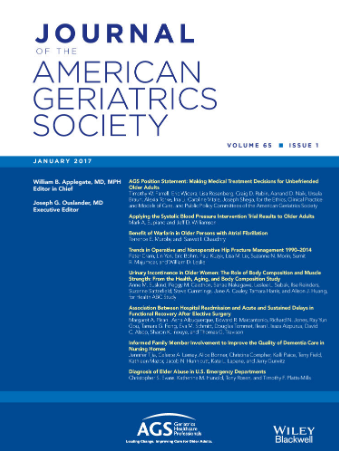Comparative Safety of Short-Acting Opioid Dose Escalation and Long-Acting Opioid Initiation in Nursing Home Residents
Abstract
Background
For patients with continued pain while receiving an initial course of a short-acting opioid (SAO), clinicians may intensify the opioid regimen by escalating the SAO dose or initiating a long-acting opioid (LAO). The objective of this study was to assess the comparative safety of opioid intensification regimens in nursing home residents with nonmalignant pain.
Methods
We conducted a retrospective cohort analysis of US long-stay nursing home residents identified from the national Minimum Data Set (MDS) 3.0 and linked Medicare data, 2011–2016. Opioid regimen changes were assessed using Part D claims to identify dose escalation of SAO, adding LAO to SAO, or a switch from SAO to LAO. The outcomes of interest were hospitalized falls/fractures and delirium identified in the MDS or hospitalization. Resident attributes were described by opioid regimen. Hazard ratios of study outcomes were quantified using as-treated (primary analysis) and intent-to-treat (secondary analysis) doubly robust inverse probability of treatment (IPT) weighted Fine & Gray regression models with a competing risk of death.
Results
In the as-treated analysis, relative to residents in the SAO escalation cohort, the hazard of delirium was elevated in the LAO cohorts (aHR [LAO switch]: 2.05, 95% CI: 1.57–2.67; aHR [LAO add-on]: 1.55, 95% CI: 1.23–1.96). Results for falls and fractures were inconclusive. We did not observe evidence of an association with falls and fractures in the primary as-treated analysis; however, the intent-to-treat analysis observed increased hazards in the LAO switch cohort relative to the SAO escalation cohort (aHR 2.86, 95% CI:1.64–4.99).
Conclusions
There is limited evidence to inform the clinical judgment between escalating the SAO dose or incorporating a LAO. Our study suggests increased risks of delirium in nursing home residents with nonmalignant pain when switching or adding an LAO to the opioid regimen relative to increasing the dose of SAOs.

 求助内容:
求助内容: 应助结果提醒方式:
应助结果提醒方式:


